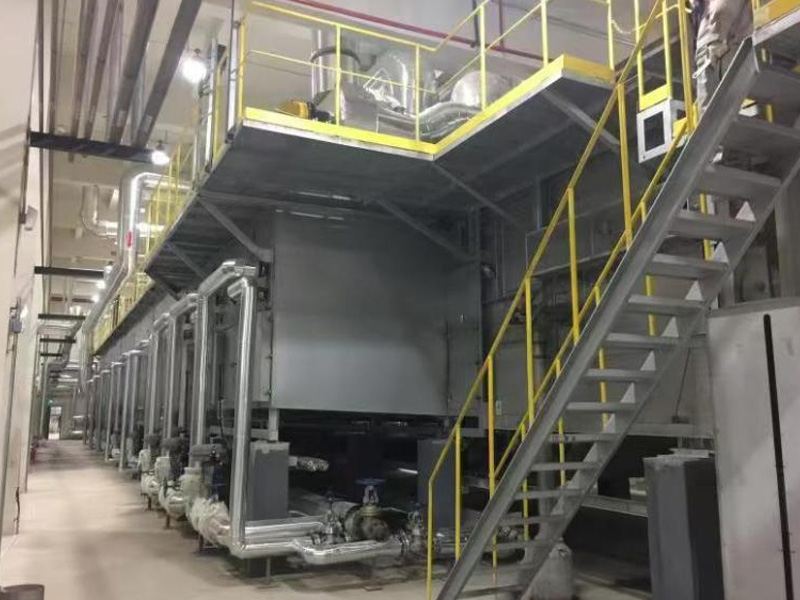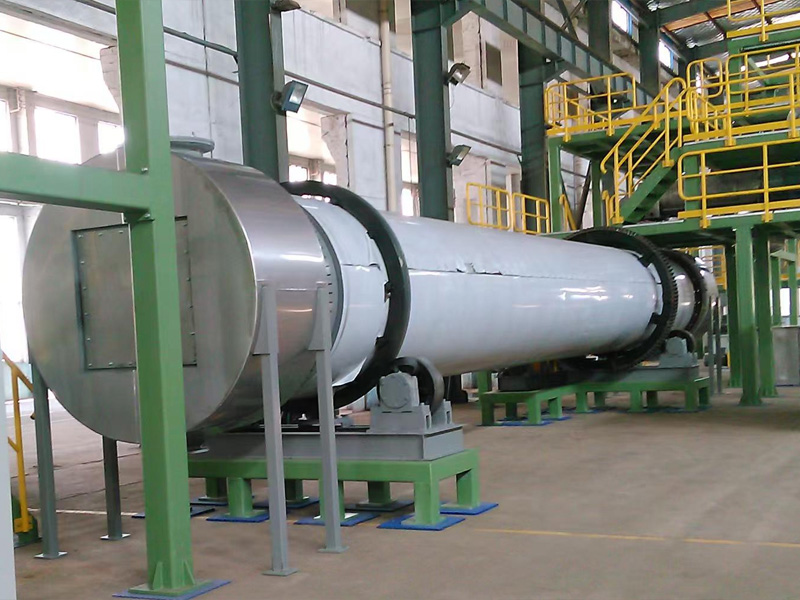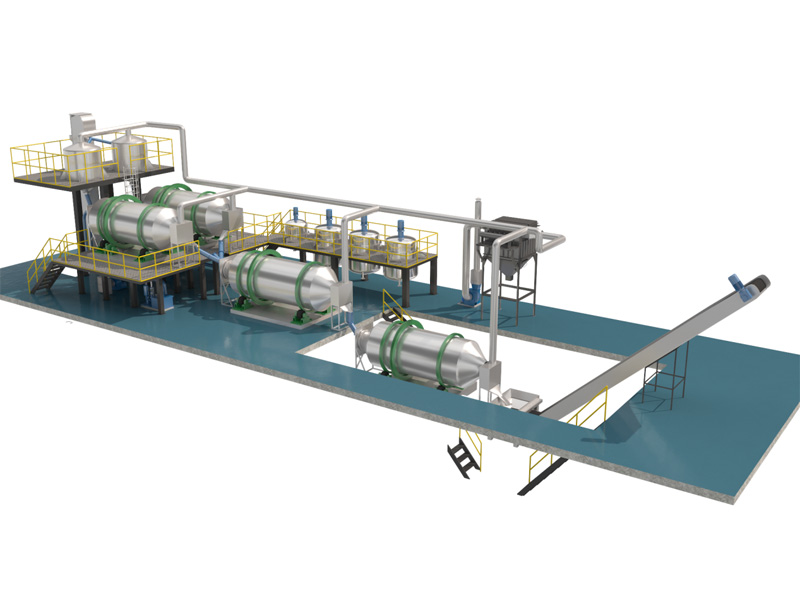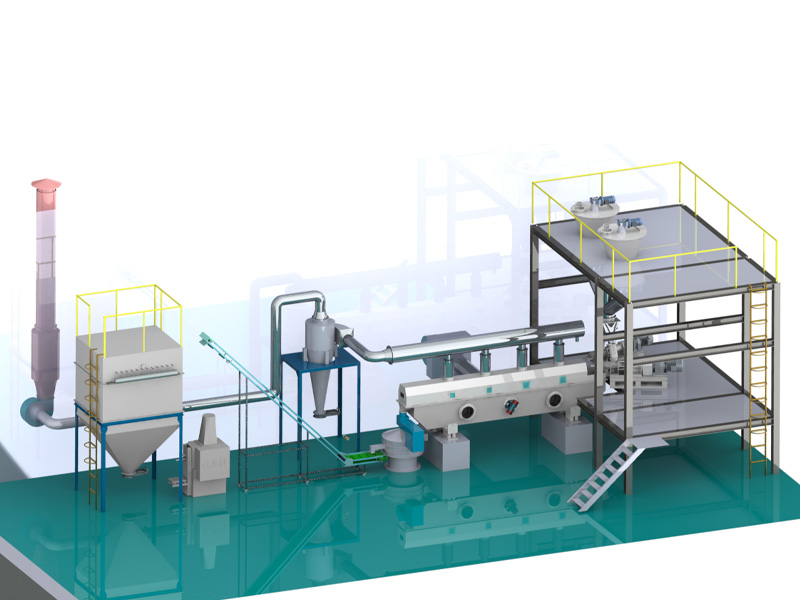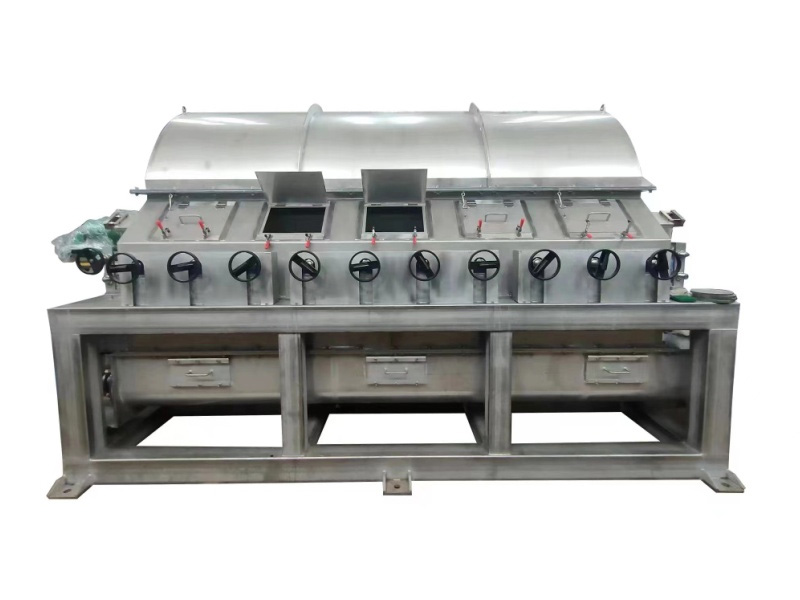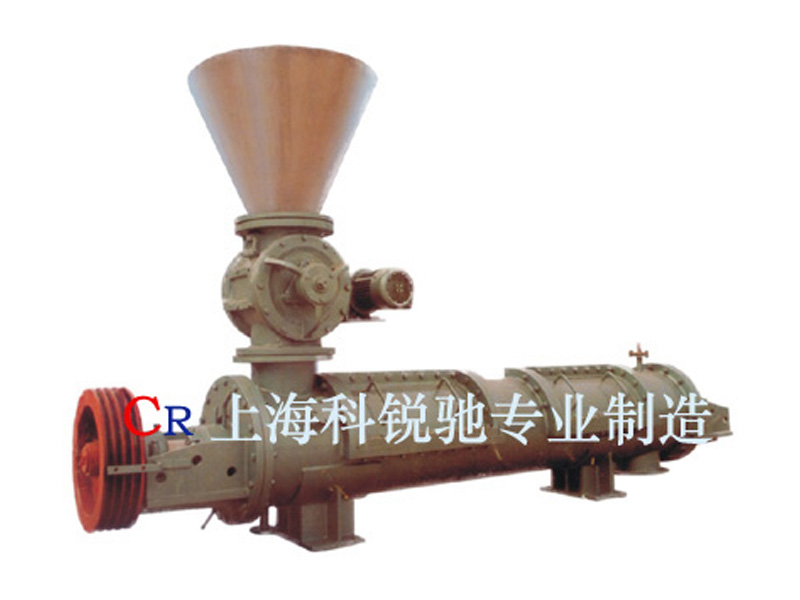I. Working Principle
The working principle of the QLJ series high-speed granulator is as follows: Powder material is continuously fed into the machine through a metering feeder installed at the top of the granulator. Inside the machine, the powder is subjected to mechanical forces generated by a high-speed rotating component with stirring teeth and aerodynamic forces. These forces cause the powder to thoroughly mix with the binder (usually water) droplets sprayed into the machine, achieving continuous mixing, granulation, and densification. The final product is spherical granules that meet the granulation requirements.
The granules are spherical with a sphericity of ≥0.7, a particle size generally ranging from 0.3 to 3.0 mm, and a granulation rate of ≥80%.
The diameter of the granules can be adjusted appropriately through the moisture content of the material and the speed of the main shaft. Generally, the lower the moisture content and the higher the speed, the smaller the granules, and vice versa.
II. Application Range
This machine is widely used for granulating light and fine powder materials. The finer the basic particles of the fine powder material, the higher the sphericity of the granules and the better the quality of the granules. Generally, it is required that the particle size of the material before granulation should be less than 300 mesh. Typical application materials include carbon black, white carbon black, clay, kaolin, alumina powder, molecular sieve, calcium carbonate, dicalcium phosphate, etc.
IV. Technical Advantages
This machine uses wet continuous granulation. The granulated material effectively controls dust emission in subsequent processes, reducing dust by ≥90%.
The high-speed rotation of the rotating component with stirring teeth forces the powder to agglomerate into spherical granules. Compared with natural agglomeration granulation devices (such as rotary disc granulators and drum granulators), it has a concentrated particle size distribution, and the strength of the granules is greater than that of natural agglomerated granules. It is also easy to control.
Strong adaptability. It can be used for granulation and forming of various sticky or non-sticky powders.
The whole machine has a compact structure, stable and reliable operation, and large production capacity.
V. Specifications and Models
|
Specification Model |
QLJ-200 |
QLJ-300 |
QLJ-400 |
QLJ-500 |
QLJ-600 |
|
Cylinder Diameter (mm) |
200 |
300 |
400 |
500 |
600 |
|
Transmission Power (kW) |
7.5 |
15 |
22 |
30 |
37 |


